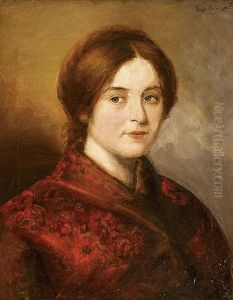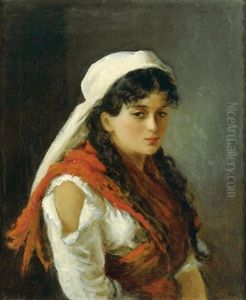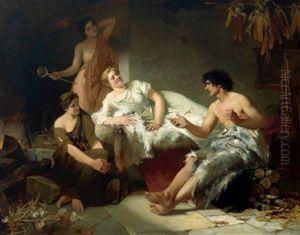Bela Gross Paintings
Bela Gross, born in 1898, was a Hungarian artist whose life and career were deeply impacted by the turbulent history of the early 20th century. Although not as widely recognized as some of his contemporaries, Gross's work offers a poignant insight into the artistic movements and societal upheavals of his time. His journey as an artist began in Budapest, where he was born into a world on the brink of monumental change.
Gross's early years were marked by the aftermath of World War I and the subsequent political shifts in Hungary, which influenced his initial artistic explorations. He was part of a generation of artists who sought to make sense of their experiences through their art, dabbling in various styles and movements that swept through Europe in the interwar period. Gross was particularly drawn to Expressionism and Constructivism, which reflected in his early works through intense emotional expression and an innovative use of form and color.
As the political climate in Hungary and across Europe grew increasingly volatile in the 1930s, Gross's work began to reflect the anxieties of the era. His art from this period is characterized by a stark depiction of social realities, often imbued with a sense of foreboding. Despite the growing threats of fascism and war, Gross continued to produce art that was both deeply personal and reflective of the broader societal concerns.
The outbreak of World War II marked a turning point in Gross's life and career. As a Jew in Hungary during the Holocaust, he faced unimaginable persecution. The war years were a time of great suffering and loss for Gross, which deeply affected his artistic output. His work from this period is imbued with a sense of despair and mourning, a stark contrast to the vibrancy of his earlier works.
Tragically, Bela Gross's life was cut short in 1944, when he became a victim of the Holocaust. His death marked the loss of a talented artist whose work captured the complexities of his time. Today, Gross's art serves as a testament to the resilience of the human spirit in the face of adversity. His legacy lives on through his contributions to the art world, reminding us of the power of creativity to confront and document the darkest moments of human history.



